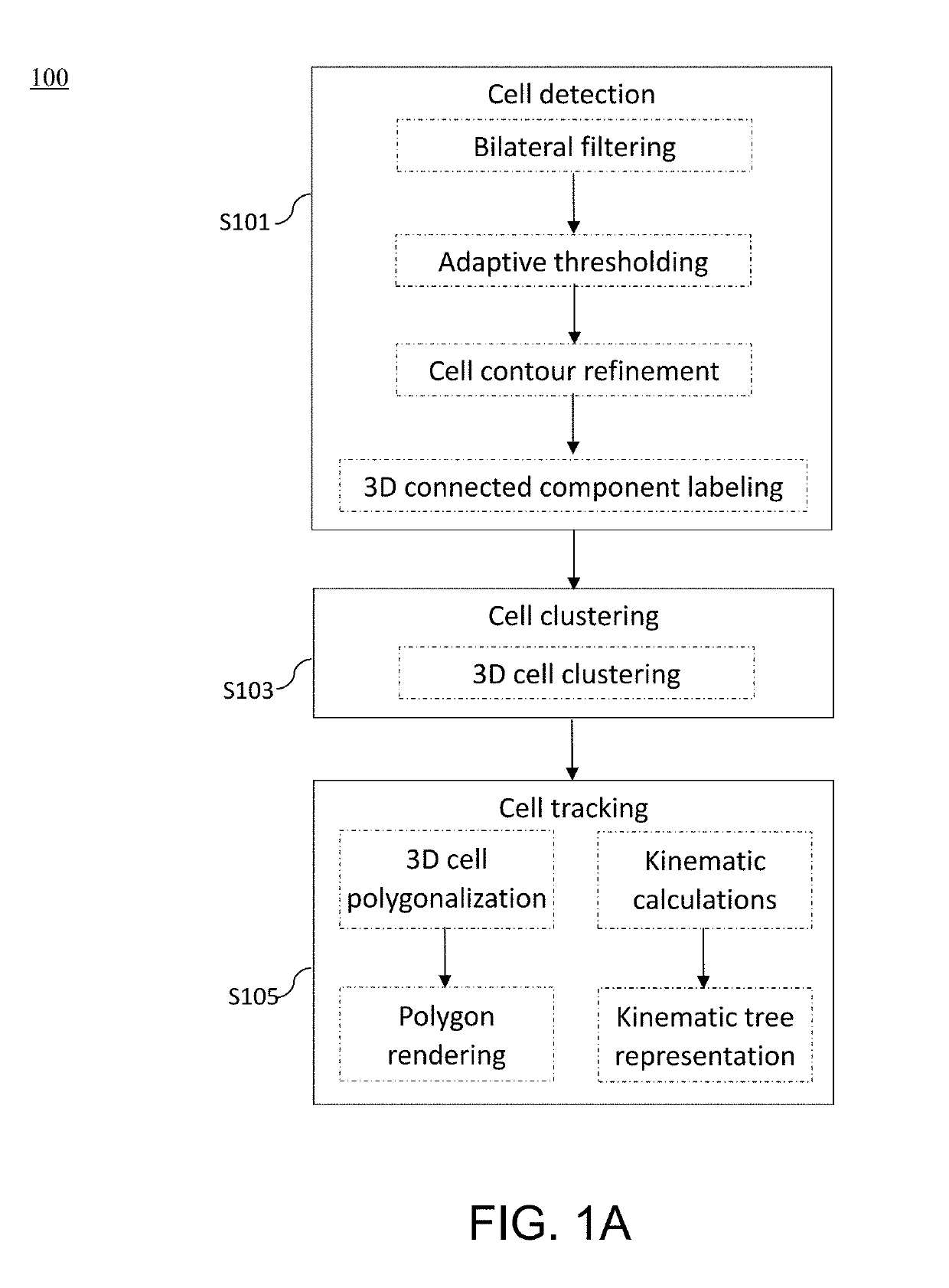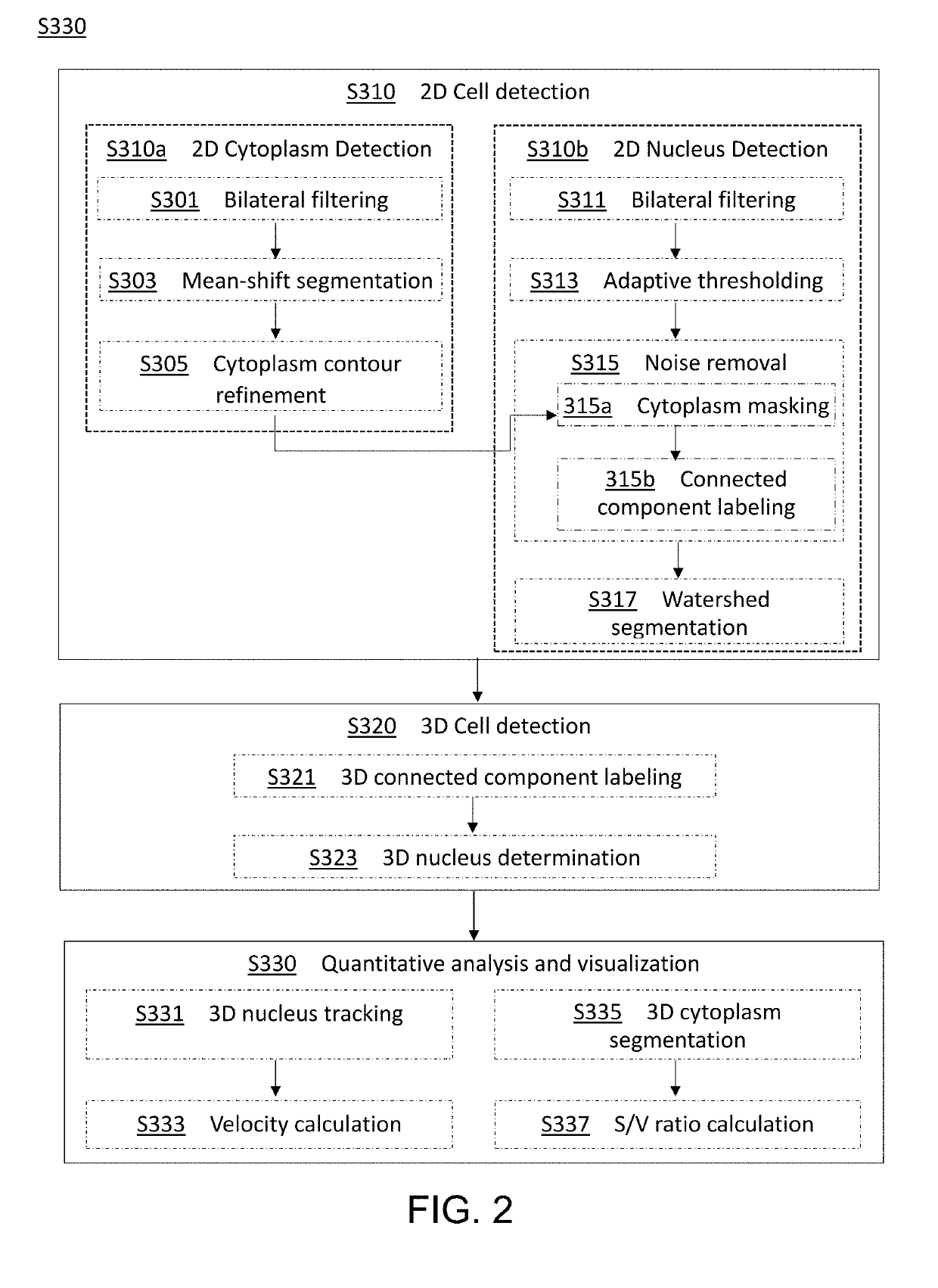Method and apparatus for image processing and visualization for analyzing cell kinematics in cell culture
a cell culture and cell kinematic technology, applied in image enhancement, instruments, monitoring particle agglomeration, etc., can solve the problems of low signal-to-noise ratio, low signal-to-noise ratio, uneven background illumination, etc., and achieve segmented images of low contras
- Summary
- Abstract
- Description
- Claims
- Application Information
AI Technical Summary
Benefits of technology
Problems solved by technology
Method used
Image
Examples
example 2
[0165](1) Embryonic Stem (ES) Cell Formation
[0166]The mouse embryonic stem cells were cultured following the protocols set forth above in Example 1.
[0167](2) Imaging Conditions
[0168]The present examples used time-lapse fluorescence microscopic images. A cross-sectional image was acquired by focusing on the microscope lens. The cross-sectional images of each time frame (t=0, 1, 2, . . . ) were obtained by moving the focusing position as using a confocal microscopy. The 3D time-series images at certain time frame could be considered as constituting a volume data. Meanwhile, 2D time-series images could be time-lapse cross-sectional images at a constant cross-section or perspective images as using a wide-field microscope.
[0169]In this example, a set of 3D time-series images obtained from live Hela cells and a set of 2D time-series perspective images obtained from live mouse ES cells were studied. These data were captured at RIKEN BioResource center, Tsukuba, Japan. FIG. 9 shows two 2D f...
example 3
[0182](1) Embryonic Stem (ES) Cell Formation
[0183]The mouse embryonic stem cells were cultured following the protocols set forth above in Example 1.
[0184](2) Imaging Conditions
[0185]In this study, the CV-1000 (Yokogawa) confocal microscope was used to obtain fluorescence microscopic images of embryonic stem cells. The camera being used is the model Olympus UPLSApo60xO. Table 3 summarizes the microscope setting. Three channels of fluorescent microscopic images of embryonic stem cells were obtained simultaneously. Time-lapse confocal microscopy images were taken at a time interval of 20 minutes for a total of 24-hour duration, resulting in 144 image datasets, each set contained 9 slices of images with a thickness of 3.75 μm, and each slice image was with the resolution of 512×512 pixels and each pixel was approximately 0.26 μm.
TABLE 3Channel NameChannel 1Channel 2Channel 3Excitation488 nm561 nmLampPower (%)10 30 19 EmissionBP525 / 50BP617 / 73ThroughFluorescentEGFPmRFPBright fieldExposure...
PUM
| Property | Measurement | Unit |
|---|---|---|
| fluorescence microscopic images | aaaaa | aaaaa |
| fluorescence microscopic | aaaaa | aaaaa |
| fluorescence microscopic image | aaaaa | aaaaa |
Abstract
Description
Claims
Application Information
 Login to View More
Login to View More - R&D
- Intellectual Property
- Life Sciences
- Materials
- Tech Scout
- Unparalleled Data Quality
- Higher Quality Content
- 60% Fewer Hallucinations
Browse by: Latest US Patents, China's latest patents, Technical Efficacy Thesaurus, Application Domain, Technology Topic, Popular Technical Reports.
© 2025 PatSnap. All rights reserved.Legal|Privacy policy|Modern Slavery Act Transparency Statement|Sitemap|About US| Contact US: help@patsnap.com



